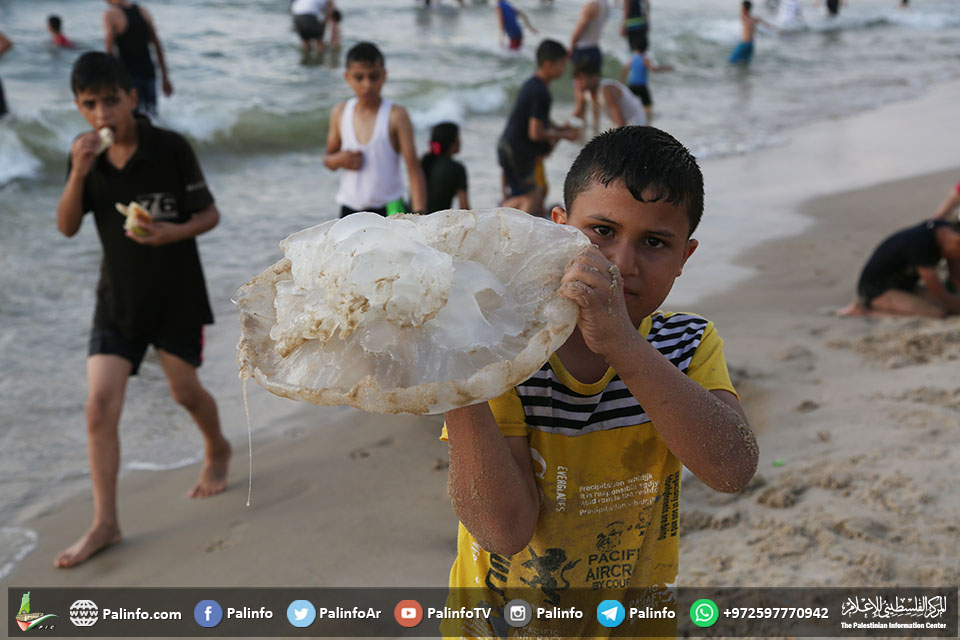With their unusual intensity jellyfish spread along the shore of the Gaza Strip disturbing the sole joy of Palestinian citizens to escape the heat wave that has been hitting the region for several days.
A jellyfish stung a teen while swimming at the Khan Younis beach. He started soaking his leg in the seawater following the instructions of the lifeguards there.
The 18-year-old Mahmoud Al-Najjar was only one of hundreds of Palestinians who fell victims to jellyfish while swimming escaping the hot weather.
The emergence of this sea creature (jellyfish) is common on the shores of Gaza but it increased this year thus depriving Palestinians of enjoying swimming to a large degree; especially because of stings that cause inflammation of the skin and swelling which cause a second-degree burns to the skin.
Despite the jellyfish Mahmoud Al-Najjar insists on swimming. “We have no place other than the sea to go to. Gaza is small and people come to the sea to get rid of their boredom” he said.
Al-Najjar’s situation is no different from that of dozens and even hundreds of citizens who come to the sea to swim and enjoy themselves during the heat wave hitting the region.
Acting as if it is hit-and-run operation young people chase jellyfish in the water and take them to the beach with caution to avoid their painful bites.
Near a rescue tower lifeguard Mohamed Lahham 33 watches the children and young people in the water fearing their infection by a jellyfish. Once he identifies an infection case he begins dealing with it based to his 12-year experience in this field.
Al-Lahham describes the month of July to the PIC as “one of the most difficult months for lifeguards” in which jellyfish spread throughout the Gaza Strip.
Jellyfish is a mollusk invertebrate creature which is classified as a stingy spongy sea creature feeding on the eggs and the digested larvae of the fish as it has no stomach.
Al-Lahham asserts that lifeguards provide proper care for holidaymakers by following them while swimming and when at risk. He called on the citizens not to approach jellyfish because the effectiveness of their poison remains even after their death.
Al-Lahham noted that the body of jellyfish contains a high proportion of water up to 95%. The jellyfish moves its body back and forth assisted by its long limbs known as Pedipalps. They usually range in size between several centimeters to four meters known for their powerful stings. The impact of the bite depends on the number of cells that penetrate the human skin.
There are deadly species of jellyfish such as the box jellyfish and the lion’s mane jellyfish which could be seen at all oceans as well as at some lakes and wetlands.
Doctors say that the best way to treat the effects of the stings is to remove the material produced by jellyfish in a safe manner and then put a substance that prevent the continued interaction of chemicals on the body.
Specialists advise to use some household items to reduce the effects and the pain of the stings such as sugar vinegar plant juices and sodium bicarbonate stressing that these substances help relieve the pain and avoid distortions that may result from the stings.
They pointed out that a person continues to feel the effects of the stings for a period of 20 to 40 minutes in the event of delayed medical assistance.














